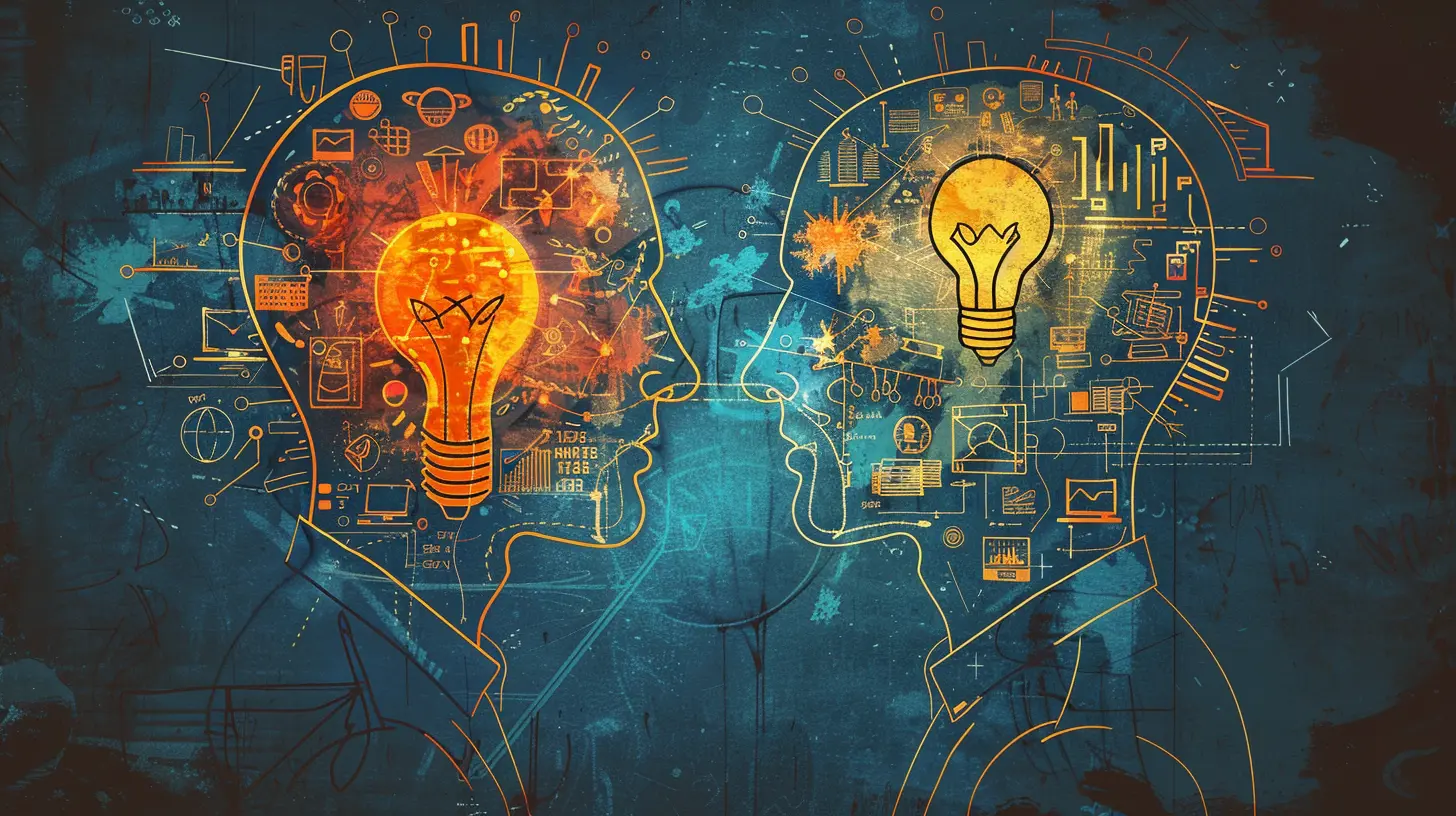Empathy in Innovation: Designing Solutions with a Human-Centric Approach
20 July 2025
Let’s face it—technology is moving fast. We’re constantly hearing about the next big app, AI breakthrough, or smart gadget. But here’s the thing: no matter how fancy the tech gets, if it doesn’t connect with real people and solve real problems, it’s just...well, noise. That’s where empathy in innovation comes in. It's like the secret sauce that turns good ideas into great solutions—the ones that stick.

What Is Empathy in Innovation, Anyway?
Imagine designing a product not based on what you think people need, but what they actually need. Mind-blowing, right? Empathy in innovation means stepping into someone else’s shoes (hopefully they're comfy) and truly understanding their struggles, needs, and dreams before building that next big thing.It’s not about guessing. It’s about listening, observing, and caring. Empathy helps innovators align their solutions with the real-world experiences of the people they’re trying to serve.

Why Human-Centric Design Is a Big Deal
If you've ever used a product that made you throw your hands up in frustration (I’m looking at you, overly complicated printers), then you already get why a human-centric approach matters. Solutions should work for us—not make us work for them.Human-centric design doesn’t just check off features. It starts with people—understanding their pain points, their joys, their context—and builds from there. Think of it like baking a cake: You want to know everyone’s allergies and preferences before throwing in that extra peanut butter.
Real Talk: Innovation Without Empathy Falls Flat
Sure, you can create something cutting-edge with all the bells and whistles, but if it doesn’t make someone’s life easier, it won’t last. Empathy connects invention to intention. Without it, we risk solving the wrong problems or worse—creating new ones.Case in point: Remember Google Glass? Super cool idea. But it didn’t quite catch on. Why? Many users felt awkward wearing them, and privacy concerns were off the charts. It lacked that emotional connection with users.

The Power of Walking in Someone Else’s Shoes
Empathy isn’t just a buzzword—it’s a mindset. It’s about observing how someone interacts with a product, digging into their frustrations, and paying attention to what they don’t say.Picture a mother juggling grocery bags, a toddler, and trying to unlock her phone. Now, imagine you’re developing a hands-free device. Doesn't that image alone make your design focus crystal clear?
It’s about context. Human-centric innovation considers the everyday moments and tiny details that traditional design overlooks. It’s in those moments that empathy truly shines.
How Empathy Drives Breakthroughs In Innovation
Let’s break this down. When you lead with empathy, something magical happens…1. You Identify Pain Points Before They Become Problems
Have you ever used a product and thought, “Did anyone even test this?” That’s a surefire sign of an empathy gap. Empathy allows innovators to spot issues early—before they spiral into costly redesigns or product failures.Through user interviews, field research, and even just spending time with customers, you get a front-row seat to their daily hurdles. That’s the goldmine where innovation begins.
2. You Don’t Just Make Things—You Create Experiences
People don’t remember features. They remember how your product made them feel. Was it easy? Intuitive? Did it make their life just a bit better?Empathy shifts your mindset from building products to designing experiences. It’s the difference between “This app schedules meetings” and “This app helps me manage my chaotic day without breaking a sweat.”
3. You Uncover Hidden Opportunities
Sometimes, users won’t tell you what they want...because they don’t even know. That’s where empathy gives you superpowers. By watching how people behave and genuinely caring about their needs, you can spot gaps and create solutions they didn’t even realize they needed.Empathy turns problems into possibilities.
Strategies for Designing with Empathy
Alright, so you're on board. But how do you actually do empathetic innovation? It’s not just a fancy strategy session or a quick customer survey.Here’s how to bring that human-centered magic into your innovation process:
1. Engage in Deep Listening
Talk less. Listen more.When interviewing users, don’t rush. Don’t lead the conversation. Ask open-ended questions like “What frustrates you most about this?” Then, really listen. Sometimes the most powerful insights come from what people say in passing.
2. Observe, Don’t Just Ask
Sometimes users can’t articulate what’s wrong. But their behavior tells the story. Watch them interact with your product...or your competitor’s. Where do they pause? Where do they fumble? Where do they smile?These clues are pure gold.
3. Build Empathy Maps
Empathy mapping is like creating a cheat sheet for understanding your users. It covers four main areas:- What users say
- What they do
- What they think
- What they feel
This simple tool helps your whole team align around who you’re designing for.
4. Prototype and Test Early
Don’t wait to unveil the “final version.” Build quick prototypes and get them into people’s hands ASAP. There’s nothing like real feedback to boost your empathy muscles.And remember: feedback is a gift. Even criticism is a sign your user is engaged.
5. Collaborate Cross-Functionally
Innovation doesn’t happen in a vacuum. Pull designers, developers, marketers, and (most importantly) real customers into the process. Everyone sees the problem a little differently—and that’s the point.More perspectives = more empathy = better solutions.
Empathy in Action: Real-World Examples
Let’s look at some cool, human-first innovations that started with empathy.IDEO's Human-Centered Designs
IDEO has long been the poster child for empathetic design. Their team once reimagined the patient experience in hospitals—not by focusing on medical equipment, but by understanding how scary and confusing a hospital visit is for patients. The result? Warmer lighting, clearer signage, and more human touchpoints. That's empathy at work.Airbnb’s Game-Changing Pivot
When Airbnb realized users weren’t booking, they literally went door-to-door, talked to hosts, listened to their challenges, and discovered the listings lacked quality photos. So they rented professional cameras and began photographing listings themselves. Listings soared—and so did the company’s success.Microsoft’s Inclusive Design
Microsoft’s Xbox Adaptive Controller was built for gamers with limited mobility. It didn’t come from a corporate brainstorm—it came from listening to the stories of disabled gamers, watching how they played, and understanding what was missing in the market.Empathy created a product that redefined inclusion.
Bumps on the Road: Challenges of Empathetic Innovation
Let’s get real—leading with empathy isn’t always sunshine and high-fives. It takes time, patience, and sometimes, a thick skin.It’s Not Always Scalable
Empathy thrives on deep, one-on-one connections. But in big teams or fast product cycles, that level of intimacy can feel impossible.The trick? Build empathy into your process. Make room for user stories, videos, and testimonials in every stage of development. Keep the human elements front and center.
Data vs. Emotion
We love data (who doesn’t?). But sometimes the emotional “why” behind behavior gets lost in the numbers. Balance the two. A spreadsheet may show that users are dropping off after sign-up—but empathy asks why they’re leaving.It’s Not Always Your Perspective
Empathy requires letting go of your own assumptions—and that can sting. The features you think are amazing might be confusing or useless to your actual users. Stay humble. Stay curious.The Future Belongs to Empathetic Innovators
Innovation is no longer just about what’s possible. It’s about what’s meaningful.People are craving connection, simplicity, and solutions that “get them.” The companies, creators, and teams who lead with empathy will be the ones who shape the future—not just invent it.
So whether you’re building the next app, launching a startup, or designing a new customer journey—start with the person, not the product.
Ask yourself: Who am I really serving? What is their day like? What do they struggle with?
Empathy doesn’t slow innovation down—it gives it purpose. And trust me, purpose is what will keep people coming back.
Final Thoughts: Let’s Put People First
Here’s the bottom line: Innovation doesn’t have to be cold and clinical. In fact, the best kind is warm, messy, and deeply human.When you put empathy at the heart of your work, you're not just solving problems. You’re making lives better—and what could be more innovative than that?
So go ahead. Talk to your users. Walk in their shoes. Build something that matters.
Because when we create with hearts wide open, the sky isn’t the limit—it’s only the beginning.
all images in this post were generated using AI tools
Category:
Innovation StrategyAuthor:

Ian Stone
Discussion
rate this article
1 comments
Sheena Ramos
Empathy drives innovation; understanding user needs fosters solutions that resonate, ensuring products not only serve but also connect meaningfully.
August 9, 2025 at 4:39 AM

Ian Stone
Thank you for highlighting the essential role of empathy in innovation! Understanding user needs truly transforms ideas into meaningful solutions.


